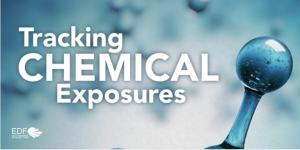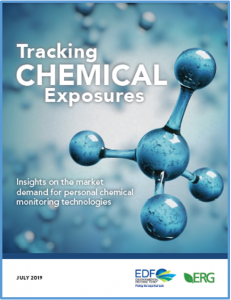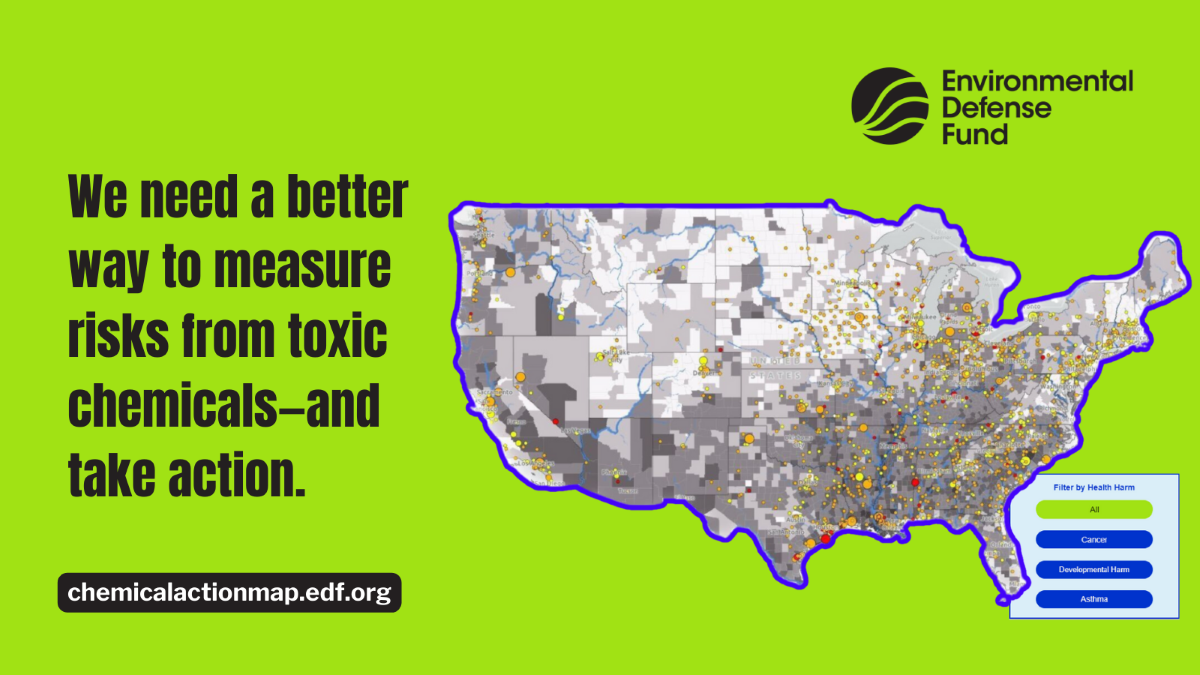
Why do we know so little about chemical exposures? Emerging technology could disrupt the status quo.
Lindsay McCormick is a Program Manager.

When I first started working at EDF in 2014, I learned a statistic that shocked me: We have human exposure data on less than 4% of the roughly half-million chemicals in commerce.[1] In other words, we know next to nothing about the vast majority of chemical exposures that people were experiencing on a daily basis.
Chemicals are found in nearly all commercial products and serve a foundational role in our economy. Yet this ubiquity comes with its downsides, as some chemicals are hazardous and can find their way into our environment and ultimately end up in our water, land, and air—and in our bodies. Exposure to certain chemical substances have been linked to a variety of adverse health impacts, including reproductive harm, disruption of normal hormone activity, and impaired neurological development in children.
The lack of knowledge about chemical exposures poses a major problem: Without better information on exactly which chemicals individuals are exposed to every day, it is challenging to develop effective policies and interventions to reduce harmful exposures and protect health.
Disrupting the status quo
But what if anyone could use a simple home-delivered kit or wearable device to reveal the chemicals in their environment—and in their body? Such technologies could make the invisible visible—providing individuals, as well as policy makers, businesses, health professionals, and others, with critical information needed to accelerate reductions in the public’s exposure to hazardous chemicals.
In 2017, EDF pursued a Year of Innovation to better understand opportunities to advance the market for personal chemical exposure monitors (PCEMs) – with the ultimate goal of improving public health. As part of this effort, we conducted interviews and convened an expert workshop to identify bottlenecks in the development and use of such technologies.
We learned that a significant gap exists between the demand and promise of PCEM technologies and the current cost or scalability of many of the available technologies today. Experts noted that while there is significant qualitative or anecdotal evidence of demand, a quantitative understanding of the potential market for these technologies is needed to drive a robust market.
EDF took that lesson and embarked on a two-part study to fill this gap.
What did we do?
To characterize and quantify the existing demand for PCEMs, we:
- Surveyed 616 individuals about their willingness to pay for PCEMs and the device features that matter most to them, using a choice experiment. The survey, which we commissioned through Eastern Research Group, Inc. (ERG), allowed us to determine the characteristics people valued most in PCEMs and how much they were willing to pay for a device with those features.
- Conducted 16 expert interviews with stakeholders across the PCEM supply chain—ranging from investors and technology developers to industrial hygienists (workplace monitoring experts) and potential institutional customers—on success factors and challenges confronting this emerging market.
What did we find?
We identified a clear market for PCEMs among general consumers:
- Consumers were willing to pay $459 for a device that includes all surveyed premium features.
- Nearly 40 hypothetical devices had a willingness to pay in the $100 to $300 range—a price range reflective of the actual price of other personal monitoring devices on the market today.
- The features that consumers valued the most were receiving 1) data on a large number of chemicals, 2) immediate results, and 3) results that provide information on both level of exposure and whether such exposure is of concern.
Our research demonstrated that not everyone values PCEMs equally. Some market segments, including individuals who are younger, individuals who are college-educated, and individuals who self-report as having healthy habits, are more likely than others to purchase PCEM devices. Similarly, certain segments of the market are willing to pay more than others for PCEM devices with “premium” features (e.g. data on a large number of chemicals), including women and those who self-reported as exposed to chemicals at work.
Experts from companies like Google, 23andMe, and Safer Made (a venture capital firm), underscored the growing market demand for PCEMs—a demand that appears to be driven by increasing awareness of chemical exposures and their health impacts, as well as the simultaneous growth of the personalized health and wellness market.
Beyond the consumer market, industrial hygiene and labor experts pointed to opportunities for PCEMs to break through existing challenges in traditional workplace monitoring as well as ideal features of wearable workplace monitoring devices to improve comfort and alert workers to real-time exposures.
Looking forward
EDF envisions a world where robust information on all types of chemical exposures enables evidence-based decisions that result in measurable reductions in harmful exposures.
Our study provides some of the first quantitative evidence of consumer demand for devices that can monitor personal chemical exposures. Armed with this new information, we hope that investors, technology developers, and other entrepreneurs will see the financial – as well as public health – value of spurring innovation in PCEM technologies.
See the full report for the details.
[1] See: Table 1 in Egeghy et al. (2012). “The exposure data landscape for manufactured chemicals.” Sci Total Environ., 414:159-66. https://www.ncbi.nlm.nih.gov/pubmed/22104386.













One Comment
The blog and the post is absolutely fantastic! Lot of information is helpful in some or the other way. Keep updating the blog, looking forward for more content …Great job, keep it up.
Nice blog. Thank you for your valuable information.